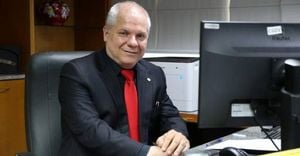The cryptocurrency exchange Grinex has announced the launch of a P2P section on its platform, allowing users to engage in direct cryptocurrency transactions with one another. This new feature is designed to enhance trading flexibility and reduce costs for users by eliminating additional fees typically associated with traditional exchanges.
The P2P section on Grinex offers three key advantages: direct transactions without additional commissions, complete control over transaction conditions through a transparent rating system, and multi-level protection facilitated by an escrow system that guarantees transaction security. At the time of its launch, only one trading pair is available in the P2P section: A7A5-RUB.
A7A5 is a ruble stablecoin, pegged to the Russian ruble at a 1:1 ratio. This token is secured by ruble bank deposits, and holders receive a portion of the interest from these deposits. A7A5 is already traded on several decentralized (DEX) and centralized (CEX) exchanges, providing users with a liquid instrument that has a clear legal basis, making it suitable for both trading and generating passive income.
Currently, Grinex supports trading in A7A5, USDT, and RUB, with plans to expand the list of available trading pairs in the P2P section, as well as to introduce new cryptocurrencies and services to the platform. The launch of P2P trading reflects current trends in the cryptocurrency market, where users are increasingly opting for direct transactions in addition to traditional exchange operations. This approach not only avoids additional costs but also offers more flexibility in executing trades.
The escrow system implemented in the Grinex P2P section is a crucial element of security. It temporarily holds funds in a special account until all transaction conditions are met by both parties, significantly reducing the risks of fraud and non-fulfillment of obligations by trading participants. Additionally, the rating system for P2P trading participants fosters a transparent reputation model, allowing users to assess the reliability of potential counterparties before making deals. This strategy encourages the formation of a community of conscientious traders.
Grinex is actively expanding its presence in the Russian market, already cooperating with over 30 regional representatives across the country. This regional network underscores the exchange's leadership ambitions in the industry. Notably, Grinex is a licensed exchange, which provides it with a competitive advantage amid tightening regulations in the cryptocurrency sector. The legal status of its operations enhances user trust and mitigates legal risks associated with digital asset transactions.
The choice of A7A5 as the first asset for P2P trading is strategic. The ruble stablecoin, backed by bank deposits, presents users with a familiar and straightforward tool for entering the cryptocurrency market. Moreover, the opportunity to earn passive income through interest on deposits makes A7A5 appealing not only to active traders but also to conservative investors.
In a related development, hedge funds are increasingly transitioning to blockchain technology, as highlighted by Miguel Kudry from L1 Advisors. According to Kudry, the influence of cryptocurrency is reshaping not just individual assets but the entire structure of asset management. He introduced the concept of "Shopification of Wealth," suggesting that blockchain can lower entry barriers and scale operations for financial consultants and asset managers.
Just as Shopify empowered anyone to launch an online retail business, Krypto enables a new generation of investment professionals to initiate and grow consulting businesses without the outdated infrastructure of traditional finance (TradFi). This democratization of financial advice heralds broader changes in asset management.
Tokenization, in particular, is poised to redefine entire asset classes, making them globally accessible, granular, composable, and tradable around the clock. Stablecoins, for example, facilitated $27.6 trillion in on-chain transfers in 2024, surpassing the combined volumes of Visa and Mastercard. The efficiency of these transactions is evident as they occur globally with significantly fewer intermediaries and less friction.
Even traditional products, such as money market funds, are moving towards blockchain. Traditional money market funds typically charge fees ranging from 10 to 25 basis points, whereas blockchain solutions can substantially reduce these costs. A study by the Boston Consulting Group estimates that tokenization could add approximately 17 basis points to annual profits, translating to around $100 billion a year on a global scale by eliminating operational inefficiencies.
In essence, tokenization makes markets continuously open and hyper-efficient, expanding access to a global base of investors. Furthermore, it enhances asset transparency, as reserves and transactions can often be verified in real-time. However, active investment strategies and managers remain opaque, presenting a challenge for transparency.
While tokenized assets can be tracked on-chain, the logic behind portfolio management often remains a black box when strategies are off-chain. Although anyone can verify the assets in a decentralized finance (DeFi) credit contract, the inflows, distributions, and economics of hedge funds are still largely opaque. The next frontier is to bring the same level of transparency and composability to the strategies themselves and their managers, not just the underlying assets.
Currently, hedge funds are characterized as large, exclusive, and opaque entities. These privately managed pools of capital employ complex trading and risk management methods to seek absolute returns. Globally, hedge funds control trillions of dollars in various strategies, from equities and credit to global macro and quantitative models. Their investor base primarily consists of institutional investors and ultra-high-net-worth individuals (UHNW), often accessed through private banks or fund-of-funds.
Direct investments typically require accreditation or qualification, with minimum commitments usually starting at $1 million or more. Elite funds often demand $5 to $10 million. Many investors access hedge funds through fund-of-funds, which aggregate several hedge funds for diversification but add another layer of fees, generally around 1-1.5% annually for management, plus 10% of profits above base funds.
These investment vehicles are often opaque, providing minimal information about holdings or trades. Investors must rely on managers who offer only periodic and partial insights into their strategies. Access remains exclusive, and information is scarce, highlighting the need for increased transparency in this sector.




